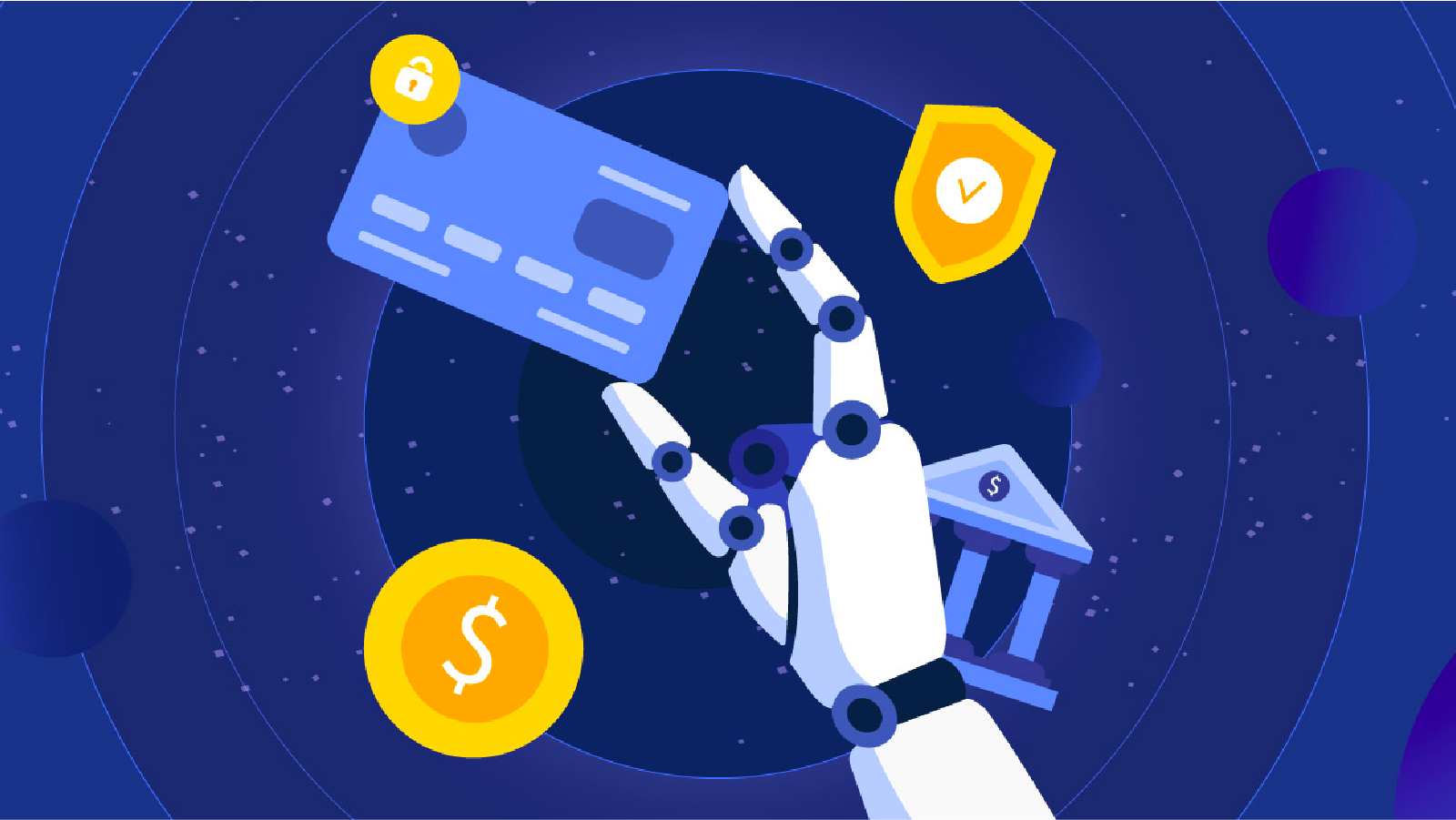Using Artificial Intelligence in Finance
Using artificial intelligence has made huge strides toward becoming an integral part of many financial institutions. Read on to learn the benefits and disadvantages.
Join the DZone community and get the full member experience.
Join For FreeIt is believed that no other technology has had a greater impact on the world in the last ten years than AI. Artificial intelligence, which gives robots the ability to learn based solely on data, is being incorporated into almost every aspect of our daily lives.
With artificial intelligence automating time-consuming tasks, increasing efficiency to a new high, and maintaining strict security and safety standards, it’s playing a significant role in improving all existing industries, from healthcare, transportation, education, management, marketing, and more. So, how big is the AI industry exactly, and just how much of the globe is integrating this technology into their workflow?
According to a study carried out by Gartner, 37 percent of businesses from all over the world have incorporated AI into their workflow to some degree. Artificial intelligence had an estimated global market value of 87 billion dollars in the year 2021 and an anticipated market value of 1,597.1 billion dollars in the year 2030.
Having said that, the financial industry is one in which AI is playing a particularly important role. In this article, we will focus on AI in the financial sector specifically. We'll go over a number of ways that artificial intelligence (AI) has altered the financial game in recent years, from providing excellent fraud detection and financial risk management to fully revolutionizing the banking sector.
Benefits of AI in Banking

Given the success of artificial intelligence over the past few decades, it should not come as a surprise that banks are attempting to integrate artificial intelligence into every aspect of their business. Giving them an edge over their rivals and simplifying various processes.
By incorporating artificial intelligence into the banking sector, they not only eliminate tedious tasks on their side, saving time and money, but they are also improving customer experience by providing service chatbots, 24-hour access to financial advisors, superior security and fraud detection, and more.
Making Highly Informed Decisions
One of the main benefits of AI in banking is its ability to suggest decisions based on extensive data analysis. The idea behind such an application is that AI models are better at analyzing massive data sets, including previous loan figures and customers’ financial assets, to predict future loan choices, in contrast to bank managers, who may primarily rely on personal bias and human insights.
AI algorithms can analyze a wide range of data, including credit history, income, and spending patterns, to provide a more accurate assessment of an individual's credit risk, given specific parameters. This information can be used by financial institutions to make better-informed lending decisions and reduce risk.
Discovering New Revenue Streams
Similar to loan financing, AI can provide banks with new sources of income. The AI model takes similar steps as it searches through millions of historical revenue streams in search of the most reliable sources of income with the best returns. For example, AI can be used to analyze customer data to identify patterns and predict behavior. This information can then be used to make informed decisions about product development, marketing strategies, and risk management. AI can also be used to analyze market trends and identify investment opportunities, helping organizations make data-driven investment decisions.
Reducing Business Costs
One of the key benefits of AI is the potential cost savings from the automation of time-consuming processes such as customer service and back-office operations. According to Insider Intelligence analysis, it is estimated that in the following year, banks will save a stunning $447 billion in cost savings. This is owing to an increasing number of banks implementing AI into their workflow and even inventing new and unique methods to use such technology in their services.
Benefits of AI in Fraud Detection
Another way that AI is helping in risk management is with improved fraud detection. Fraud has been around since money was invented, so it is important to keep a solid defense against it. A bank credit card can be used by its owner as well as by criminals who steal or guess the account number, posing threat to both the account holder and the banking institution.
Banks shoulder the responsibility for fraudulent activity that occurs to an individual to inspire safety and security for funds. No one wants to stumble upon a multi-thousand dollar transaction they did not make, nor does the bank want to cover the damages of a theft. By deploying fraud detection, illegitimate transactions can be canceled, saving both parties valuable time and money.
Over the past few decades, fraud detection has advanced significantly, sparking a prolonged war between corporations and fraudsters. With each step a corporation takes to protect its financial access security, fraudsters are coming up with new and progressively more creative ways to put their hands on financial transactions. Having said that, it comes as no surprise that banking institutions and finance organizations have taken advantage of AI, with 58 percent of the financial sector implementing it as the latest line of defense against fraud crimes.
According to a study carried out by Statista's Research Department, an estimated loss of a whopping 756 million US dollars to online fraud in the United States alone in the year 2021; massive fortunes are annually spent on upgrading fraud detection systems across all financial sectors.
How Does Artificial Intelligence Help Prevent Financial Fraud?
Pre-artificial intelligence fraud detection was performed manually by teams of investigators. A common technique is to compare user data against multiple databases and look for potential matches, which can be very time-consuming.
This method is not only slow but also prone to human error. To combat this problem, enterprise solutions were created that accelerate the process by gathering more information from a wider variety of sources and processing it faster than any human team could hope to manage.
Real-Time Fraud Detection
With AI incorporated into fraud detection systems, we can quickly spot and halt any fraudulent transactions. Preventing fraudulent transactions from happening in the first place to eliminate any serious damage from happening. The model is then capable of studying different patterns and insights in order to differentiate between what is considered to be normal customer purchasing behavior and what is considered suspicious.
Location of transaction, purchase habits, sudden large transactions, and more are all contributing factors to preventing fraud. Various banks will send automated texts to cardholders attempting to purchase in drastically different geographical locations from recent previous purchases. For example, a cardholder could not possibly make a normal purchase at their local grocery while also making a transaction halfway across the globe within the same hour.
Handling Exponentially More Data
With AI, we can handle a greater number of transactions in significantly less time. This allows institutions to check for fraud across millions of daily transactions with less human intervention. With the introduction of AI into the financial sector and especially fraud detection, banks can utilize AI algorithms to detect any suspicious financial transfer among millions of daily transfers. Artificial intelligence can even discover minute details that human operators would usually mess up. Fraud transfers are then eliminated completely or filtered and passed on to a human operator or incorporate 2-factor authentication in order to check for the validity of the transaction. So, how exactly does a fraud detection algorithm come to be constructed in the first place?
Fraud detection is built using machine learning which is a subfield of artificial intelligence that allows computers to learn by leveraging massive amounts of organized and labeled data. In the case of fraud detection, a machine learning model is trained by ingesting a massive amount of previous financial transactions. These data sets include both fraudulent and non-fraudulent transactions with many edge cases in between. In the case of supervised machine learning, each and every transaction would be labeled as either true(fraud transaction) or false(non-fraud transaction), and sometimes a maybe in which human intervention is needed.

Future of AI in Fraud Detection
As with any machine learning model, the more data we feed it, the better it gets at the task. In the case of fraud detection, the model can continue learning from the thousands of new transactions that it receives daily, allowing the fraud detection model to improve continuously with time. The model then saves what is considered normal behaviors and compares all customer transactions to them. If a request falls out of the ordinary, then the model directly labels it as suspicious, preventing such a transaction from taking place.
Fraud detection has become a critical part of any financial institution's strategy. The explosion of data has made fighting fraud more challenging than ever before. Yet, it’s not enough to simply have new tools, and technical capabilities at our disposal — institutions need to know how best to apply them so they can detect the latest threats from the most effective vantage point. It’s predicted that artificial intelligence will soon be able to spot financial scams even before they take place.
Disadvantages of AI in Finance
AI can help businesses to leverage their data, manage risk and make better decisions. Despite the many promises of AI, there are also certain limitations and disadvantages that must be acknowledged. All in all, every business is different, so there is no one-size-fits-all solution that works for everyone. A company’s decision to implement AI will depend on its key objectives, strategies, and capabilities.
Data Quality
Data is one of the most crucial components of a machine learning model due to the model’s performance being directly correlated to the quality of data in which it is fed. When it comes to the utilization of AI in the financial sector, it’s essential to increase the trust factor of a model’s performance by making sure that the data utilized is enormous, varied, and updated often. The process of data gathering should not be taken lightly, as the construction of a high-quality data set requires a great deal of time and effort.
Data Security
One of the most difficult challenges of AI in the financial sector is data security. This is owing to the fact that a large amount of the data employed in these models can be considered highly sensitive. Customers’ names, ages, addresses, credit card numbers, bank accounts, and other information may be included in such data. Under these circumstances, a data breach will jeopardize clients' personal privacy while also giving attackers access to their financial assets. To address this problem, further security precautions must be taken to prevent sensitive data from slipping into the wrong hands.

The Impact of AI on Financial Services
Looking at AI in finance from a historical perspective, it is clear that artificial intelligence and machine learning have been used extensively since the 1980s. AI in finance started out as highly theoretical research, but in recent years has made huge strides toward becoming an integral part of many financial institutions.
AI opens up a world of possibilities, from providing banks and financial institutions with the ability to maximize their services in a constantly changing and ambiguous environment, giving them a significant competitive advantage over their rivals, to offering fully automated services like chatbots and personal financial advisors, drastically reducing the number of fraud trails in all financial transactions, and offering better insights into upcoming loans and financial risks.
Without the contributions of artificial intelligence, the financial world would look very different than it does today. The limits of AI are yet unknown, but conversely, the capabilities of AI are yet to be realized. However, one thing is clear; the world is already being fundamentally altered by it.
Published at DZone with permission of Kevin Vu. See the original article here.
Opinions expressed by DZone contributors are their own.

Comments